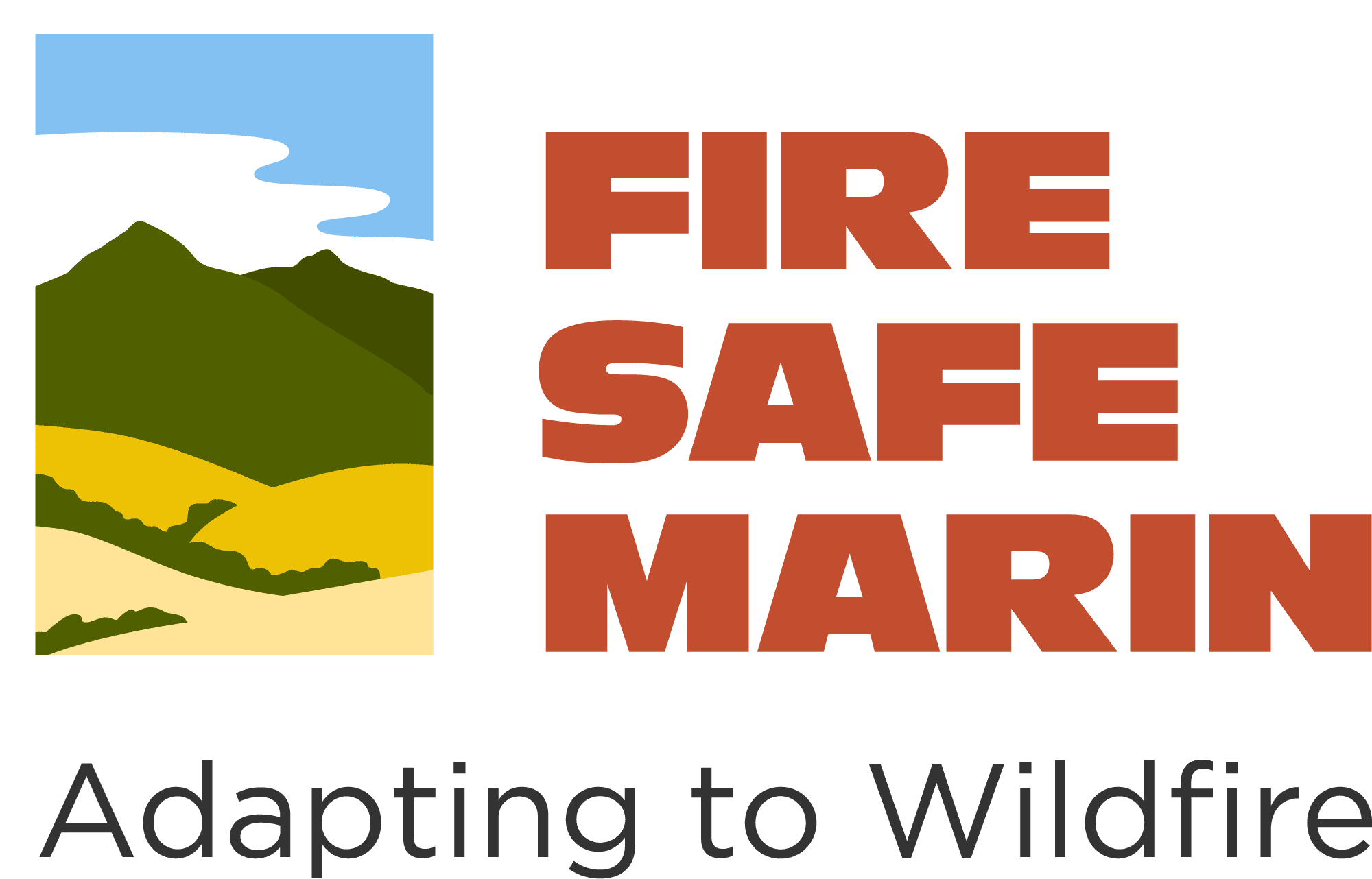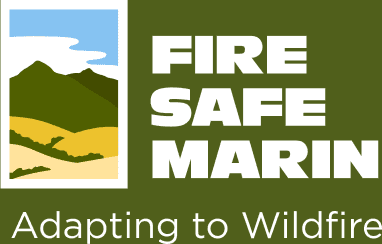UPDATED! Download our printable Evacuation Checklist and Family Communication Plan! Print a copy for every family member and fill out in advance. Available in English and Spanish.When an evacuation is anticipated, follow these checklists (if time allows) to give you and your home the best chance of surviving a wildfire.
In General
Monitor local news and radio stations for fire information. In Marin, AM740, 810 and FM 88.5 are good options.
Alert your neighbors, especially if they are have children, or are elderly or disabled.
On Your Person
Dress in long sleeves and long pants, heavy cotton or wool is preferable no matter how hot it is.
Wear leather gloves, head, and eye protection – goggles are best.
Cover your face with a dry bandanna or cotton or wool cloth or scarf OVER an N95 respirator.
Carry a headlamp and flashlight (even during the day), cell phone, and spare battery.
Carry your car keys and wallet on your person.
Drink lots of water and stay hydrated.
Animals
Locate your pets and place in carriers NOW. You will not be able to catch them when panicked as a fire approaches.
Be sure your pets wear tags and are microchipped.
Place carriers (with your pets in them) near the front door, with fresh water and extra food.
Prepare horses and large animals for transport and consider moving them to a safe location early, before evacuation is ordered.
- Learn more about evacuating pets…
- Learn more about evacuating large animals…
Inside the House
Shut all windows and doors, leave them UNLOCKED.
Remove flammable window shades and lightweight curtains; close metal shutters.
Move flammable furniture to the center of the room, away from windows and doors.
Shut off gas at the meter or propane tank; turn off pilot lights.
Leave all indoor and outdoor lights on so firefighters can see your house under smoky conditions.
Shut off air conditioning and house fans.
Outside
-
Gather up combustible items outside the house and bring them inside (patio furniture, children’s toys, door mats, trash cans, etc). Optionally move them at least 30′ from any structure, or place in your pool.
Turn off propane tanks.
Move propane BBQ appliances indoors or at least 30’ from structures and close tank valves.
Connect garden hoses to outside water valves or spigots for use by firefighters. Attach squeeze-grip nozzles if you have them.
Fill water buckets and place them around the outside of house, especially near decks and fences.
Don’t leave sprinklers on or water running, they are ineffective and can reduce critical water pressure for the entire neighborhood.
Hosing your roof down is dangerous and ineffective. Clean your gutters and blow leaves away from house instead (only if time allows).
Leave exterior lights on so your home is visible to firefighters in the smoke or darkness of night.
Back your car into the driveway so it is facing out, with vehicle loaded and all doors and windows closed.
Unlock and prop open fence and side gates.
Place ladder(s) at the corner(s) of structures for firefighters to quickly access the roof.
Seal attic and ground vents with pre-cut plywood or commercial seals.
Patrol your property and monitor the fire situation.
Don’t wait for an evacuation order if you feel threatened.
Check on or call neighbors and make sure they are aware and preparing to leave.
Assist elderly or disabled residents.
Carpool to reduce traffic when evacuating!







